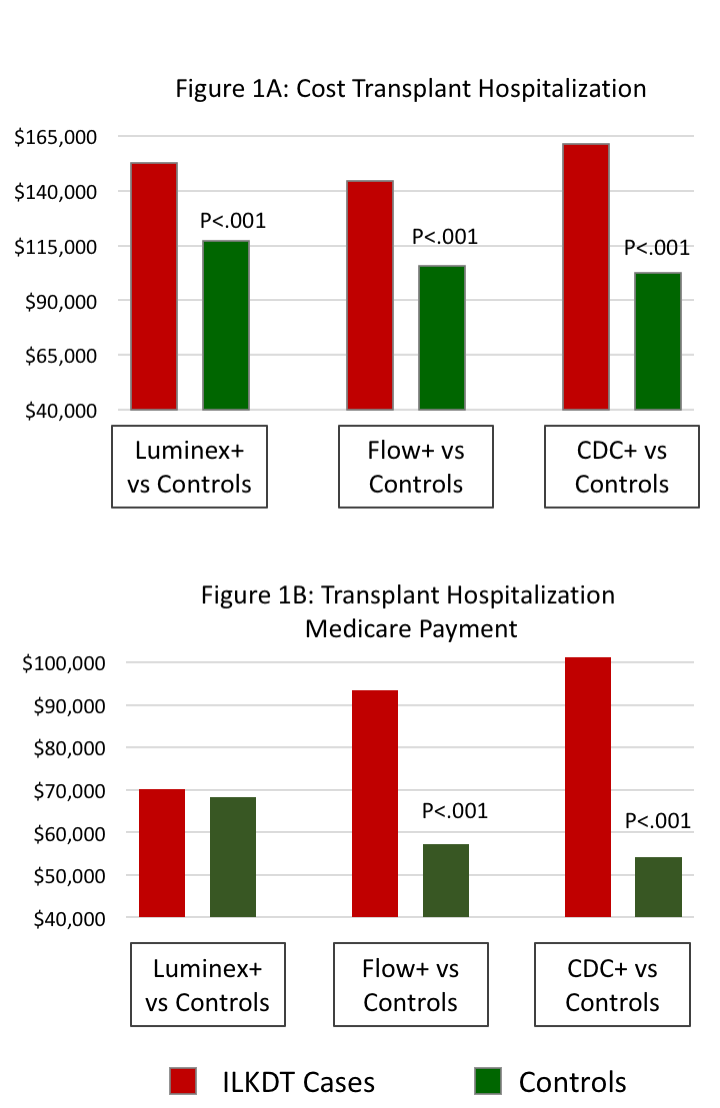The Incremental of Cost of Incompatible Living Donor Kidney Transplant: A National Cohort Analysis.
1Surgery, East Carolina University, Greenville, NC
2Transplant, Saint Louis University, St. Louis, MO
3Surgery, Johns Hopkins University, Baltimore, MD
Meeting: 2017 American Transplant Congress
Abstract number: D282
Keywords: Alloantibodies, Economics, Kidney transplantation
Session Information
Session Name: Poster Session D: Non-Organ Specific: Economics, Public Policy, Allocation, Ethics
Session Type: Poster Session
Date: Tuesday, May 2, 2017
Session Time: 6:00pm-7:00pm
 Presentation Time: 6:00pm-7:00pm
Presentation Time: 6:00pm-7:00pm
Location: Hall D1
Incompatible living donor kidney transplant (ILDKT) has been established as an effective option for patients with willing but human leukocyte antigen incompatible live donors, reducing mortality and improving quality of life. However, ILDKT remains a highly resource intensive procedure, requiring treatment with intravenous immunoglobulin, plasma exchange and cell depleting antibody treatment. This study sought to compare the hospital cost (including organ acquisition cost [OAC]) and Medicare reimbursement, exclusive of the cost report payment, for ILDKT recipients (N=926) and matched compatible transplants (N=3,688). Patients were transplanted between 2002-1011. Data were assembled from a national cohort study of ILDKT, hospital cost accounting data from the University HealthSystem Consortium, and Medicare claims for the transplant hospitalization without OAC. Overall, the unadjusted cost of ILDKT transplant was 41% higher than compatible transplant ($151,024 vs. $106,636, p<.0001). In a multivariate model, the incremental cost of ILDKT vs. compatible transplant varied by antibody titers in a multivariate analysis: low titer (Luminex+) 20% increase, medium titer (Flow+) 26% increase, and high titer (CDC+) 39% increase (p<.0001 for all). (Figure 1A) ILDKT transplant was associated with higher Medicare payments ($91,330 vs. $63,782 p<.0001), longer mean length of stay (12.9 vs. 7.8 days p<.001), and greater percentage of patients receiving outlier payments (22.1% vs. 6.6% p<.001). (Figure 1b) In conclusion, ILDKT increases the cost of the transplant procedure; however, the incremental cost is far less than long term dialysis treatments.
CITATION INFORMATION: Axelrod D, Lentine K, Schnitzler M, Xiao H, Lou X, Orandi B, Garonzik Wang J, Massie A, Segev D. The Incremental of Cost of Incompatible Living Donor Kidney Transplant: A National Cohort Analysis. Am J Transplant. 2017;17 (suppl 3).
To cite this abstract in AMA style:
Axelrod D, Lentine K, Schnitzler M, Xiao H, Lou X, Orandi B, Wang JGaronzik, Massie A, Segev D. The Incremental of Cost of Incompatible Living Donor Kidney Transplant: A National Cohort Analysis. [abstract]. Am J Transplant. 2017; 17 (suppl 3). https://atcmeetingabstracts.com/abstract/the-incremental-of-cost-of-incompatible-living-donor-kidney-transplant-a-national-cohort-analysis/. Accessed November 15, 2025.« Back to 2017 American Transplant Congress
